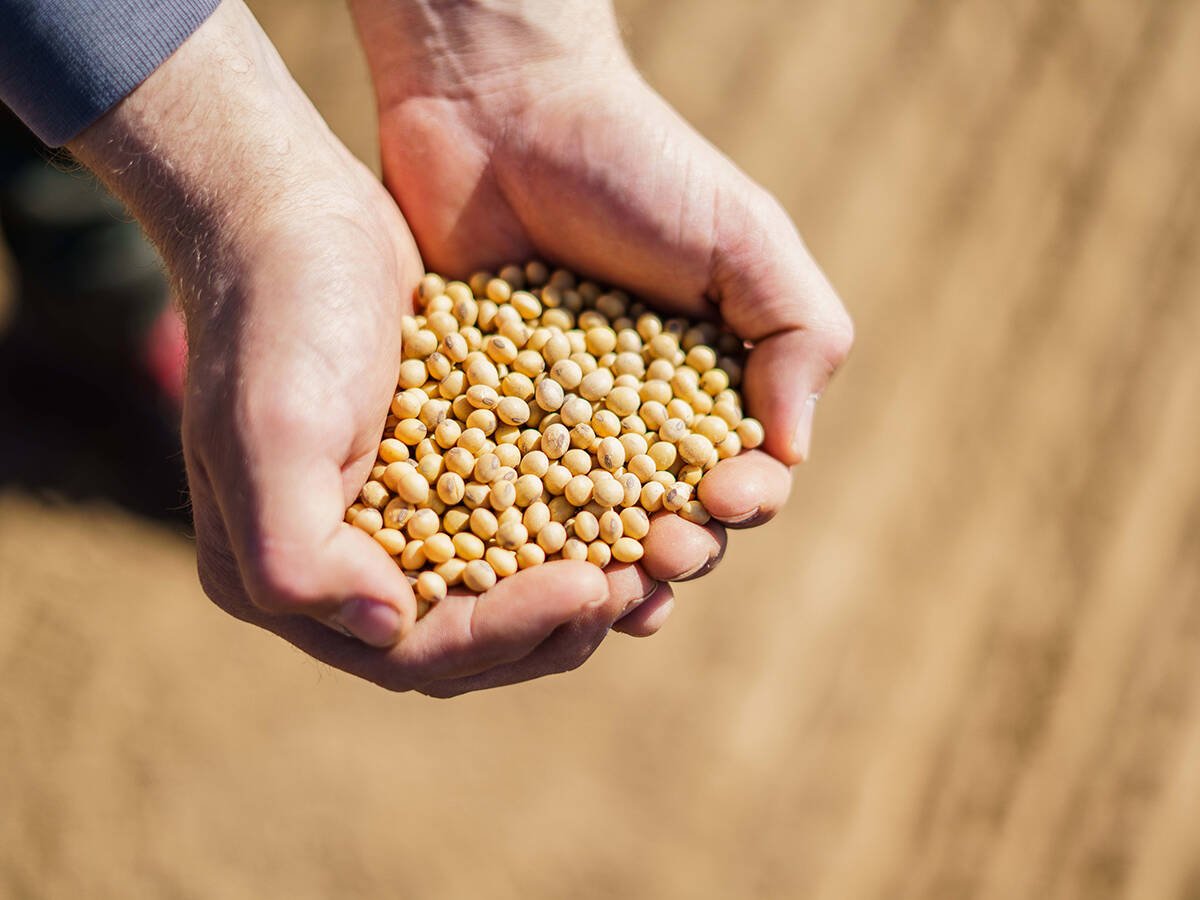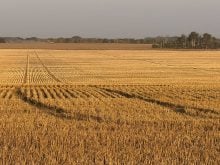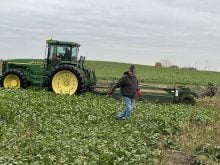GWYNNE, Alta. – Norm Schmuland sleeps well at night knowing his pair of Maremma guardian dogs are keeping his sheep safe from stray dogs or coyotes.
The large, shaggy white dogs may look half asleep and seem like they’re following the flock only because they have nothing better to do, but the moment the dogs sense danger, they leap to attention and are away.
“They stretch out like a racehorse,” said Schmuland, who has had guardian dogs watching his sheep for 15 years. “They can jump a four foot (1.2 metre) fence like nothing.”
Read Also

U.S. government investigates high input costs
The USDA and DOJ are investigating high input costs, but nothing is happening in Canada.
The popularity of guardian animals, either dogs, llamas or donkeys, has grown in recent years as word spread of their success at keeping predators away and preventing loss of sheep, goats or cattle.
The dogs even keep the yard free of gophers, he said.
“Anything not normal they take as a predator,” said Schmuland.
While there are no firm statistics, Randy Smith with Sunterra Foods said any of Alberta’s 2,200 producers that are serious about the sheep business have a guardian animal.
“I wouldn’t be without them,” said Smith, whose Maremma dog patrolled the pastures and the house yard when he had his own flock.
Not only did his dog protect the sheep from coyotes, but it also protected Smith from ornery cows during calving time.
“He always stayed between me and the cow,” said Smith, who admitted the dog was exceptional.
It wasn’t until the dog was old and arthritic and had difficulty walking that Smith began to lose animals to predators.
Evelyn Schermers of Big Valley, Alta., has three llamas, a donkey and four guard dogs to protect the 600 ewes and 1,000 lambs on her central Alberta farm. One guardian animal isn’t better than the other, she said. They all have their specialties.
“You need an assortment. They all do a different job,” she said.
Donkeys work best in a pen or fixed area. Llamas are territorial and will patrol their area seriously, said Schermers, who added both donkeys and llamas need to be female or neutered.
“Intact males get too aggressive with the sheep.”
Guardian dogs work best if they’re not castrated, but they usually have to be to keep the neighbours happy, she said.
There are about seven main types of guardian dogs: Great Pyrenees, Komondor, Akbash, Anatolian Shepherd, Maremma, Shar and Kuvasz.
Schermers has two Akbash-Maremma cross dogs and two Akbash dogs chosen for their individual strengths. Some work better in wooded areas, others in open fields; some stay close to the flock while others patrol a large area.
She chose the Akbash breed for its ability to leap fences, although Schermers has also seen her llamas leap the fence in pursuit of a coyote.
While the dog’s natural instinct is to stay with the flock and guard against danger, there is no guarantee of the animal’s ability.
“There are more bad dogs than good dogs,” said Schermers, whose advice is to keep trying until a good dog is found.
“They either have a sense of belonging with the animals, or they don’t.”
One of the biggest problems is getting a young pup and turning it into a pet, she said.
Schmuland agrees: “I don’t make a pet out of them. I don’t pet them and make friends with them.”
The dog food is in a self-feeder in the Quonset, not on the doorstep, he said.
Colleen Sawyer, executive director of the Saskatchewan Sheep Development Board, can’t understand what took Canadian sheep producers so long to catch on to the importance of the guardian dog.
“They’ve helped the industry so much,” said Sawyer, who uses guardian dogs with her sheep flocks. “The dog has proved the most useful if you have a coyote problem.”
The Saskatchewan government was so impressed with guard dogs that in 1998 it implemented a program to give producers $100 toward the purchase of their guardian dog.
Since the program began the government has paid $37,500 toward the purchase of guardian dogs.
Sawyer said each dog is different in predator control. Some dogs kill the predator, while other just chase them away.
“We find dead coyotes beside the feed bowl,” said Sawyer.
Some of her dogs patrol the perimeter while others stay with the sheep.
“They all act differently,” she said.
One of her dogs never leaves the sheep even to eat while another picks up the feed bucket and carries it if the sheep move.
Russell Dean of Caronport, Sask., said he has used donkeys, llamas and dogs to protect his sheep and he prefers the dogs because of their ability to chase the animal beyond the corral or pasture.














